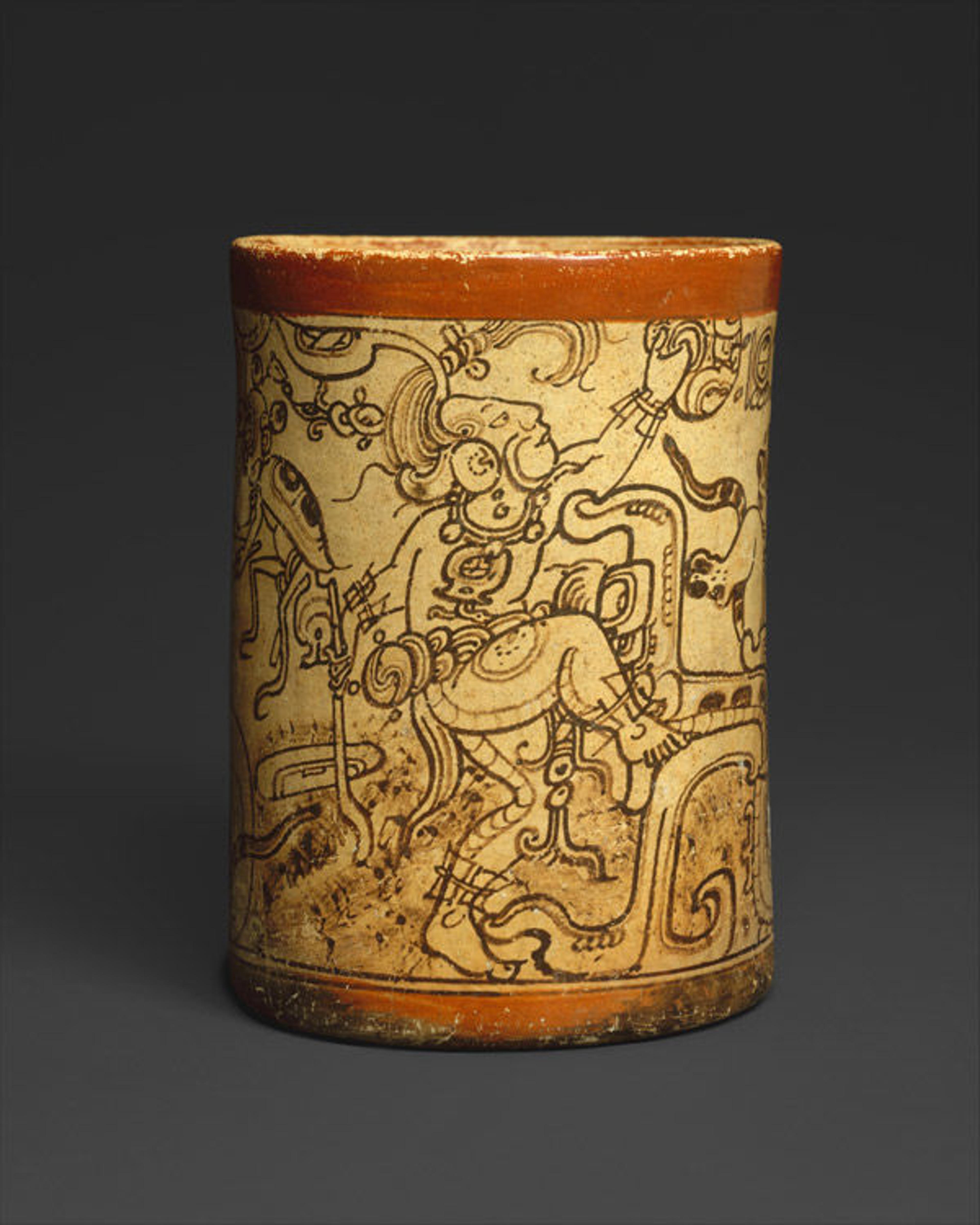A view of the Mesoamerican gallery (gallery 358). Photograph by Karina H.
«I have been particularly interested in Mesoamerica and the Maya peoples ever since I visited the archaeological site of Copan in Honduras when I was younger. I was stunned by the virtuosity of the stelae in the main plaza, the intricate palaces and step pyramids of the acropolis, and the magnificent hieroglyphic stairway. After my visit, I became increasingly curious about who the Maya were, so my family and I visited Mayan sites in Guatemala, Belize, and Mexico. Then, during my high school summers, I participated in archeological digs at the Late Classic Mayan palaces of Cahal Pech in Belize, and I subsequently began to wonder how the artifacts we excavated were selected, preserved, and displayed in museums around the world. »
As a high school junior with a penchant for art, history, and archeology, I was looking for an internship this summer that would encompass my interests. I had previously interned in the Western and Pre-Colombian Art department at the National Museum, New Delhi, so I chose to apply as an intern in the Department of the Arts of Africa, Oceania, and the Americas at the Met. I had visited the Met countless times before, but I always thought of it as a huge, static building that housed an eclectic mix of artworks. I soon learned that there is a huge amount of preparation that goes into displaying each object in the galleries.

One of Karina's favorite Mayan artworks in the Met's collection. Vessel, Mythological Scene, 7th–8th century. Guatemala, Mesoamerica. Maya. Ceramic; H. 5 1/2 x Diam. 4 1/2 in. (14 x 11.4 cm). The Metropolitan Museum of Art, New York, The Michael C. Rockefeller Memorial Collection, Purchase, Nelson A. Rockefeller Gift, 1968 (1978.412.206)
During one of my first days as an intern at the Met, I was introduced to the early plans for an upcoming exhibition that is scheduled to open in 2017. Then, my mentor pointed out the tremendous amount of the work that went into installing just one artwork in the Mesoamerican gallery: from finding the right height level for displaying it, to making sure it was invisibly immobilized by small wires that curled around the feet of the object, to researching for the signage so that people can better understand it, a project I would later take on.
Before starting my intern project, I was tasked with visiting each of the nearby galleries to "observe like a visitor" and pick out the elements I liked and disliked the most about the galleries. The idea was to find out what worked in those galleries and then use these best practices to refine the Mesoamerican gallery. One of the things I noticed was that the signs in the Ancient Near Eastern Art galleries define what Ancient Near Eastern art and culture is, and my mentor decided that it would be useful for me to write up and display similar signage for the Mesoamerican gallery.
I started my assignment by looking up the definition of "Mesoamerica" in the books The Art of Mesoamerica: From Olmec to Aztec by Mary Ellen Miller, Mexico: From the Olmecs to the Aztecs by Michael D. Coe, The Maya by Michael D. Coe and Stephen Houston, and The Oxford Handbook of Mesoamerican Archaeology by Deborah L. Nichols and Christopher A. Pool. After synthesizing a clear and concise definition, I leveraged my past visitor experiences at the Met to come up with other things visitors might want to know for use in the signage. This part was difficult because most of the books were geared toward researchers and scholars, and I had to use what I found creatively to convey a cohesive and interesting story for the general public.

During her internship, Karina found out that many people are involved in moving a case, the traces of which are seen here as a square on the carpet. Photograph by Karina H.
During my research, I learned that Mesoamerica is technically a "cultural area" that dates to as early as 10,000 B.C., and that well-known civilizations such as the Maya, Aztec, Olmec, Teotihuacan, and Oaxaca are all part of ancient Mesoamerica. How and when people settled in Mesoamerica, how the civilizations developed, and the similarities between the different cultures—such as their ball games, ceramics, hieroglyphics, and architecture—were all pieces of the puzzle that I found intriguing. I made sure to include these key facts in the signage material.
As a visitor, I never thought twice about how the art was arranged or how much planning and thought went into each display, but during my internship, my perception of the Met and other museums has completely changed. My summer internship has been a tremendous learning experience for me, and has enabled me to appreciate the detailed and important work that is required to preserve and display great works of art.
